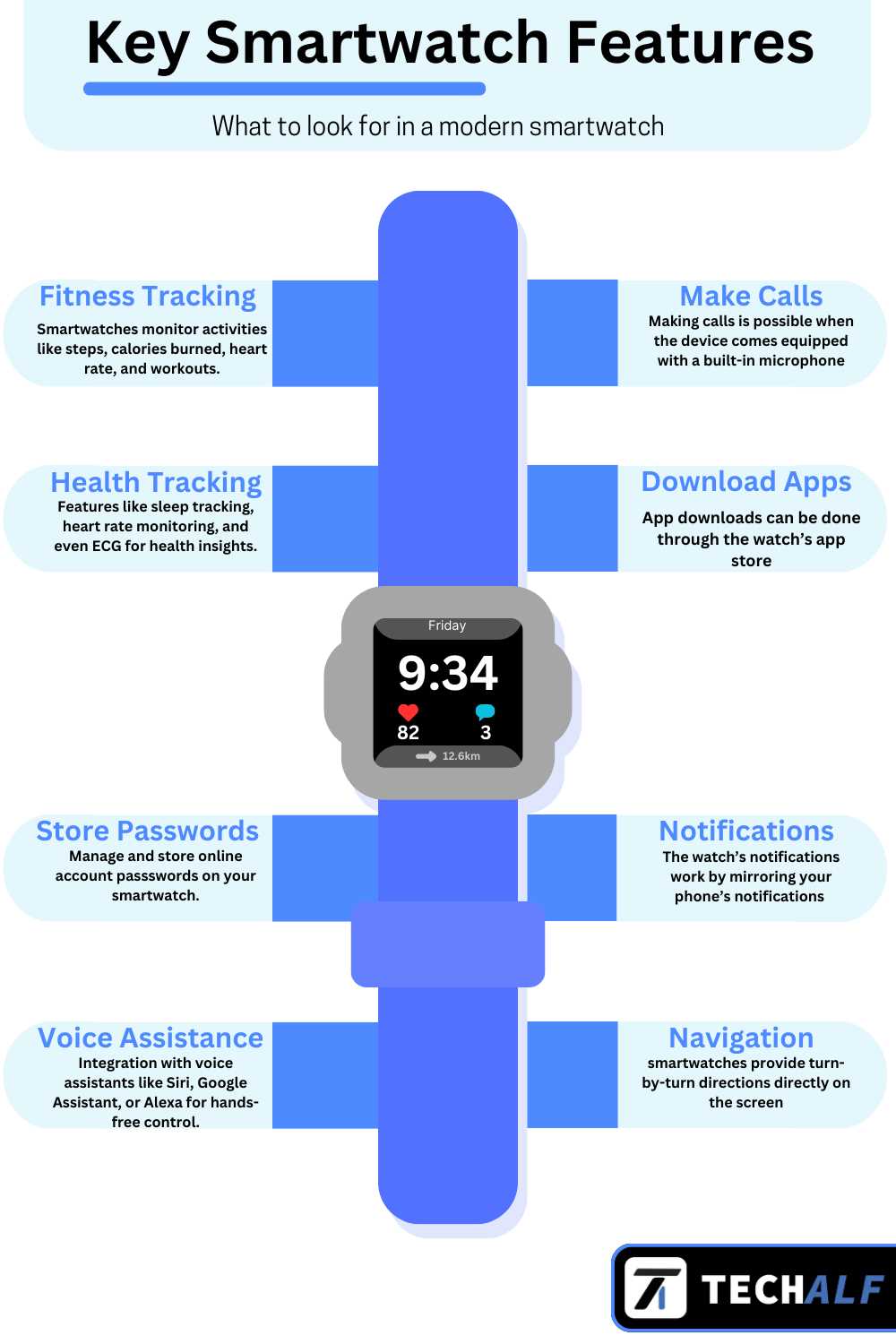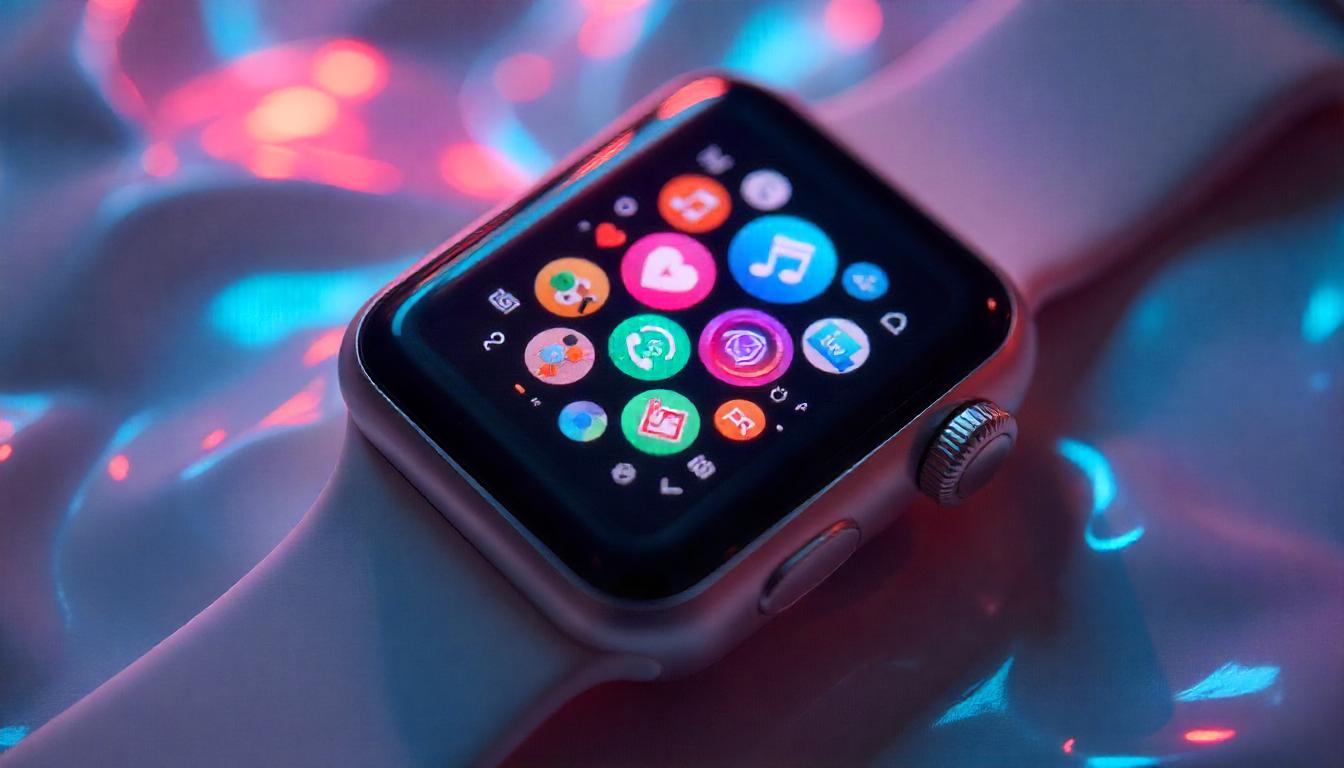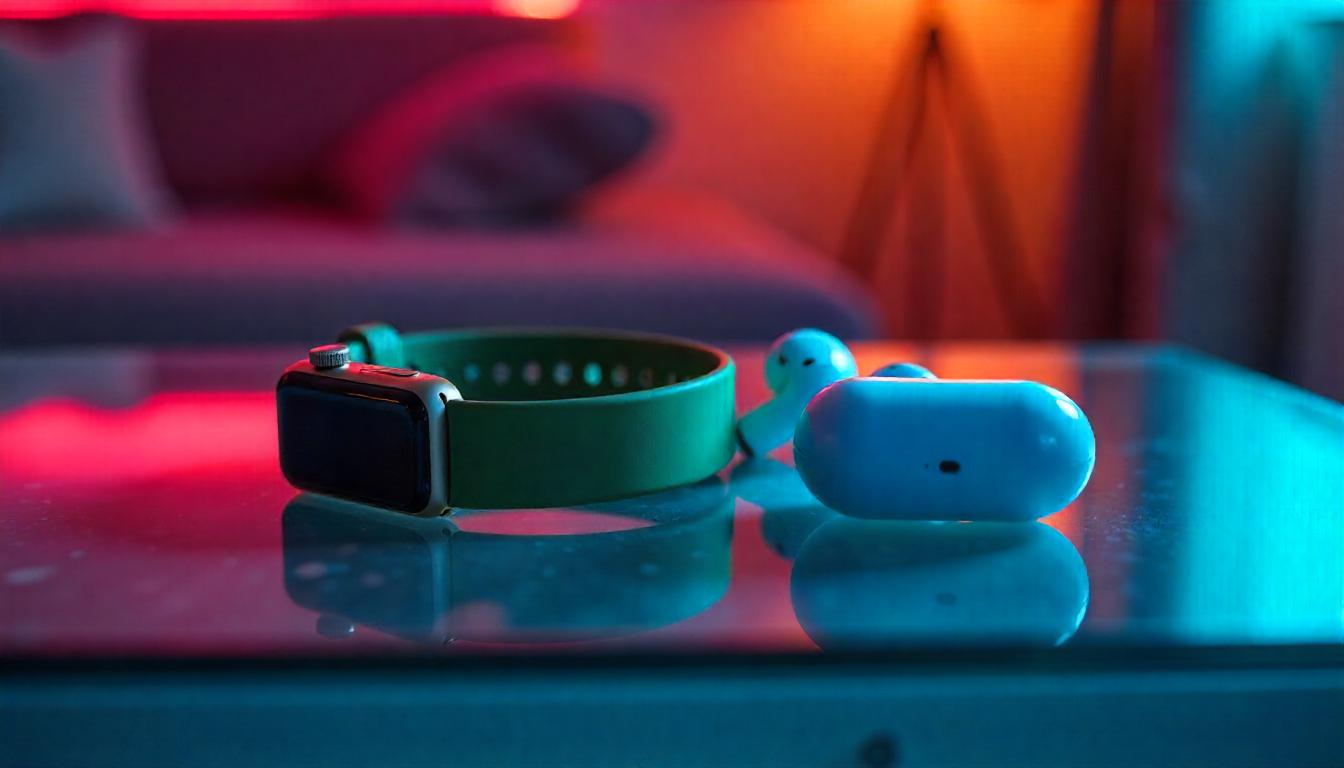A smartwatch is a portable, small, and wearable computer that is somewhat similar to your smartphone. Having the ability to measure your blood pressure and heart rate; it can be said it’s more or less as capable as your smartphone if not more convenient.
In this article, we will explore the meaning of a smartwatch.
So, What is a smartwatch?
A smartwatch is a wrist-worn device with a touch screen that users can interact with. Users can command this device with taps, gestures, swipes, and voice commands.
Smartwatches can not just only tell the time but can measure your heartbeat all the way to your blood pressure and your body composition as well.
A smartwatch is “smart” due to the ability to measure your body data from on-board sensors and process it to display in a user-digestible format.
Most if not all digital watches including smartwatches employ a microprocessor and a memory just like your phone,
This processor (CPU) can read and process binary code and output a desired result which
History
The history of smartwatches dates back to the 1970s when the first digital watches, like the Pulsar Time Computer (1972), were introduced, offering basic timekeeping and calculator functions. However, the concept of a “smartwatch” as we know it began in the 1990s. In 1994, Seiko released the Ruputer, a wrist-worn computer that allowed users to run small applications.
In the early 2000s, Microsoft introduced its SPOT (Smart Personal Objects Technology) watches, which provided weather, news, and other information through FM radio signals, though they didn’t gain much popularity.
A significant breakthrough came in 2013 with the Pebble Smartwatch, which raised millions through Kickstarter. Pebble could connect to smartphones via Bluetooth, display notifications, and run apps, marking the beginning of modern smartwatch capabilities.
In 2014, major tech companies entered the space. Samsung, Motorola, and LG launched Android-powered smartwatches, followed by Apple in 2015 with the Apple Watch, which quickly dominated the market. The evolution of smartwatches continued with improvements in fitness tracking, health monitoring, and app integration, becoming convenient wearable devices that go far beyond their original purpose as digital timepieces.
How Do Smartwatches Work?
Smartwatches function as extensions for your smartphone, running algorithms through your data to determine your current activities.
These wearable devices can pull this off thanks to many hardware components alongside key software components, let’s take a look at such components:
Hardware
- Display: There is usually a touch-sensitive display on your smartwatches that allows you to fully interact with it through various ways, be it by swiping up, left, or custom gesturing. Most Displays are LED or OLED.
- Processor and Sensors: a central processing unit (like on your smartphone) runs bits of binary code which manages tasks and runs apps, also not mentioned are in-built sensors (accelerometers, gyroscopes, heart rate tracker, GPS, and even SpO2 sensor) which help your smartwatch track & monitor health, fitness, and movement in real-time.
- Connectivity: most smartwatches feature a BlueTooth chip on-board, this chip enables a lot more than just establishing a connection between the wearable and your phone. Audio controls, receiving notifications, and accessing apps are such abilities. Wi-FI and NFC features aren’t missing on some of the higher-end models.
- Battery: A rechargeable battery is used for Powering the wrist-worn device. Battery life depends on usage and the specific model. Here is a guide on optimal charging performance.
Software & Operating Systems
The little wrist-worn computers use specialized operating systems to optimize functionality on small screens, For example:
- Apple Watch uses watchOS.
- Samsung Galaxy Watch runs on WearOs or Tizen.
- Other Brands use one of many other operating systems.
The smartwatch “Companion App”
To use your digital watch, you need to install its companion app on your smartphone.
Although it is possible to use without the app, installing and syncing it with the phone is important as doing so enhances the watch’s functionality.
In addition, the app unlocks a wealth of features such as accessing settings, syncing data, and installing additional apps on your smartwatch.
The Apple Watch uses the Apple Watch app on iPhones, and WearOS watches use the WearOS app on Android phones.
Through the companion app, user can:
- Customise watch faces and notifications.
- Sync fitness and health data (e.g. steps, heart rate).
- Install apps and Update software.
- Manage device settings.
Key Features of a Modern Smartwatch
For a smartwatch to be considered “smart” it must atleast have some of the features below.

Fitness and Health Tracking
Sensors integrated within your smartwatch monitor steps, calories, heart rate, sleep, and even stress levels,
There are advanced models which offer workout modes for activities like swimming, cycling, or running.
Making calls
Making calls is possible when the device comes equipped with a built-in microphone, speaker, and cellular connectivity for standalone calling.
However, smartwatches with Bluetooth allow users to make and receive calls by syncing with the paired smartphone, and use the phone’s network to establish the call.
The smartwatch in this scenario acts as a remote control for your smartphone which lets you dial numbers, answer calls, and use the watch’s speaker and microphone.
Downloading apps
App downloads can be done through the watch’s app store similar to your smartphone.
Depending on the operating system, WatchOS (Apple watch) or WearOS (Android watches).
To Download an app:
- Open the App Store or Google Play Store on the watch.
- Browse or search for the desired app.
- Select the app and tap Download or Install.
Keep in mind that some apps may require you to sync with the companion app on your phone to enhance their feature sets.
Notifications
Smartwatches can display notifications especially when you sync it to your smartphone. The watch’s notifications work by mirroring your phone’s notifications displaying calls, emails, texts, and app alerts directly to your wrist.
Whenever a notification arrives on your phone, your watch receives it and displays it on the screen, usually accompanied by the notification sound or vibration.
Some watches allow you to reply to these notifications by voice commands or quick replies for texts, such options allow you to stay connected without picking up your phone.
However, some watches display notifications that only a wearable could provide. For example, The Apple Watch features a fall sensor designed to detect when the wearer has taken a hard fall. If a fall is detected, The watch will vibrate. Sound an alarm and display an alert asking you if you are okay.
If the wearer doesn’t respond or dismiss the alert within 60 seconds, the watch will automatically contact pre-designated emergency services on your behalf by sending a message with your location.
Navigation
Most wearables nowadays have made use of the GPS (Global Positioning System) so that when using navigation apps such as Google Maps or Apple Maps, the smartwatch provides turn-by-turn directions directly on the screen.
Some models have the GPS built-in while others may use the GPS on the paired phone.
This enables your digital watch to pinpoint your location and track your movement, allowing you to follow a route without constantly checking your phone.
Different Types of Wearables:
General Purpose Focused
These wearables act as extensions for smartphones and offer a wide range of features such as cellular connectivity. Some examples include:
- Samsung Galaxy Watch
- Apple Watch
Hybrid Focused
Hybrid watches combine analog designs with limited “smart” features. Examples include Withings Steel HR or Fossil Hybrid HR, these watches have physical hands and minimalistic displays for notification or step counts.
While such watches don’t offer as many features as full smartwatches, they are chosen for their traditional and minimalist appearance and the significantly longer battery life compared to other types, sometimes these watches last weeks or even months on a single charge.
Fitness-Focused
Fitness watches, also known as fitness trackers, are tailored for physical activity monitoring.
Fitness trackers prioritize health and fitness tracking. With features like heart rate tracking, GPS tracking, and detailed workout analytics.
Some models offer advanced features such as VO2 max, sleep tracking, and stress monitoring.
These smartwatches may lack some of the non-fitness features found in general-purpose watches but they excel in providing data for running, cycling, swimming, and other activities. These devices may also have a longer-than-average battery life, designed to last through extended workouts.
Usually worn by athletes and fitness enthusiasts. Some examples include:
- Garmin Forerunner
- Fitbit Versa, and Polar Vantage
Luxury Focused
Luxury smartwatches also exist and cater to those looking for high-end fashion combined with technology. These watches are mostly produced by luxury brands like Tag Heuer, Montblanc, and Louis Vuitton.
These wearables blend premium materials like stainless steel, leather, and sapphire crystal with smart technology. While they provide core smartwatch features their true appeal lies in design and craftsmanship.
They are more expensive than standard smartwatches due to the premium build and brand name but may lack some of the cutting-edge health or fitness tracking features found on other wearables.
The Future For Smartwatches
In the future, we should expect to see more AI-driven feature sets in smartwatches
AI powdered smartwatches will get smarter, as we have seen with the Rabbit R1 and Humane AI Pin devices. With improved AI integration, Voice assistants like Siri and Google Assistant may become more intuitive.
In conclusion, the future of smartwatches promises to be exciting, with emerging AI and innovations that will further enhance the technology and convenience in our daily lives.
You may consider buying a smartwatch for the convenience and the wealth of features it provides, which can enhance your quality of life.
FAQs
Yes, future smartwatches are expected to have a longer battery life due to advancing technology in battery production and processor efficiency, thus allowing future smartwatches to run for days or even weeks on a single charge.
With emerging AI technologies, smartwatches are expected to predict user needs and offer personalized recommendations and voice assistance.
In the future, smartwatches could revolutionize health monitoring by offering more advanced and continuous tracking of vital signs, Enhanced sensors and AI could allow smartwatches to analyze patterns, predict potential health risks, and even alert users or medical authorities in emergencies.
















